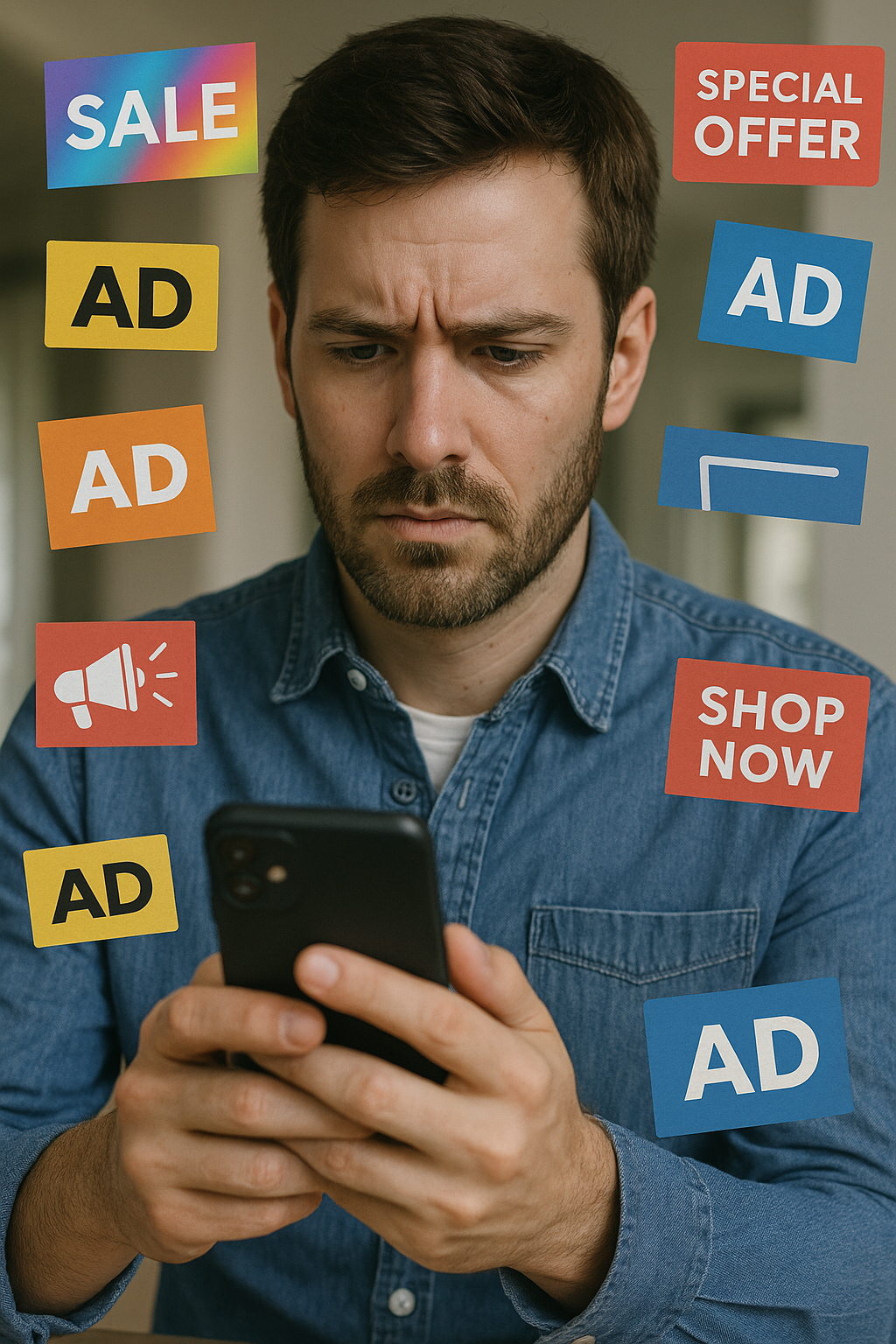
By Jenny Holly Hansen | WBN News | May 7, 2025
In today’s digital world, we’re exposed to thousands of advertisements each day. From sponsored posts and pop-ups to streaming ads and YouTube pre-rolls, the average consumer is inundated with marketing at nearly every turn. This phenomenon—known as ad saturation—has made it increasingly difficult for brands to capture attention without spending heavily. But the problem isn’t just about volume. It’s about visibility, trust, and relevance—and that’s where technology is playing both a complicating and a potentially game-changing role.
What Is Ad Saturation?
Ad saturation occurs when the marketplace becomes so flooded with advertisements that individual messages lose their effectiveness. Consumers learn to tune out promotional content—skipping ads, installing blockers, or simply scrolling past without engaging. As a result, even well-crafted campaigns risk falling flat if they don’t cut through the clutter.
The cost of attention has risen. And for small to mid-sized businesses, competing with big brands for digital space can feel like shouting into a hurricane.
Why It’s Getting Worse
Several technological advancements have fueled this saturation:
- Programmatic advertising has made it easier—and cheaper—for companies to run thousands of ads automatically across websites and social media.
- AI-generated content has dramatically increased the volume of marketing messages being pushed out, often without human refinement.
- Retargeting tools follow consumers from platform to platform, increasing the sense of overload and sometimes turning interest into annoyance.
While these tools have helped businesses reach audiences more precisely, they’ve also contributed to the over-saturation of digital spaces.
How Brands Can Stand Out
To rise above the noise, brands need more than budget—they need strategy, creativity, and trust. Here’s how technology can help, rather than hinder:
1. Data-Driven Personalization
Consumers ignore irrelevant ads. But personalized, timely content still performs well. AI and CRM integration allow brands to tailor messaging based on browsing behavior, purchase history, and preferences—making ads feel helpful rather than intrusive.
2. Interactive and Experiential Content
Emerging technologies like AR (augmented reality), interactive video, and gamified experiences are helping brands engage audiences on a deeper level. These formats break the pattern of passive scrolling and encourage active participation.
3. Native and Contextual Advertising
Rather than interrupting the experience, native ads blend in with the platform's content. When paired with contextual targeting (ads based on page content, not user data), these formats can appear more relevant and less jarring.
4. Authenticity Through UGC and Influencers
People trust people. User-generated content and micro-influencers help brands show up in feeds as recommendations rather than ads. Technology platforms can identify ideal influencer partnerships and track ROI more effectively than ever before.
5. Ad Frequency Capping and Smart Delivery
With the help of machine learning, advertisers can now control how often the same user sees an ad. This prevents burnout and increases effectiveness by showing the right ad at the right moment.
Final Thoughts
Ad saturation is real—and it’s not going away. But while technology has contributed to the flood, it also offers tools to rise above it. The brands that succeed in today’s crowded digital ecosystem won’t just be the loudest or the richest. They’ll be the most relevant, the most respectful of attention, and the most intentional about how they use tech to connect—not bombard—their audiences.
Let’s Keep Talking:
Jenny is a business insurance broker with Waypoint Insurance.
She is also a business development consultant with Impresario Partners, helping Canadian Business expand overseas.
She can be reached at 604-317-6755 or jholly-hansen@wbnn.news. Connect with Jenny on LinkedIn at https://www.linkedin.com/in/jenny-holly-hansen-365b691b/. Connect with Jenny at BlueSky: https://bsky.app/profile/jennyhollyhansen.bsky.social
Let’s Meet Up:
Jenny Holly Hansen is a cohost with Chris Sturges of the Langley Impact Networking Group. You are welcome to join us on Thursday’s from 4pm to 6pm at: Sidebar Bar and Grill: 100b - 20018 83A Avenue, Langley, BC V2Y 3R4
TAGS: #Jenny Holly Hansen #Technology #Ad Saturation



